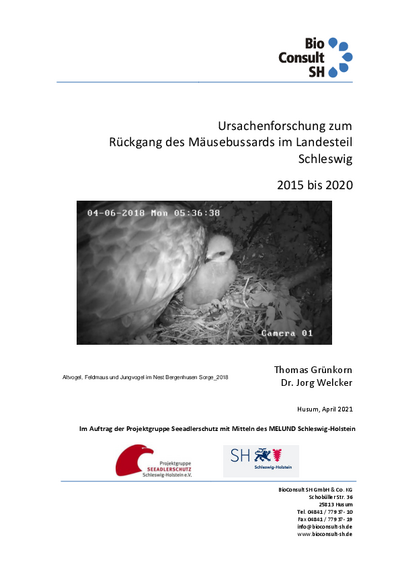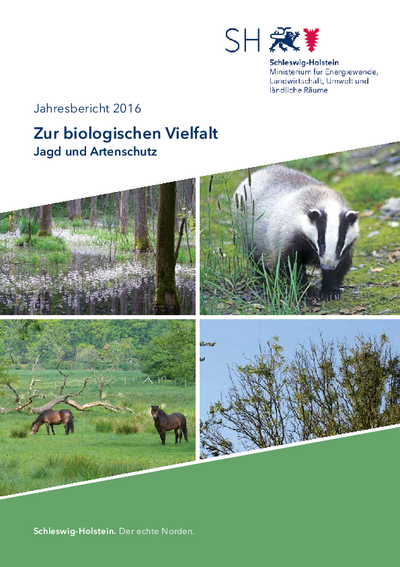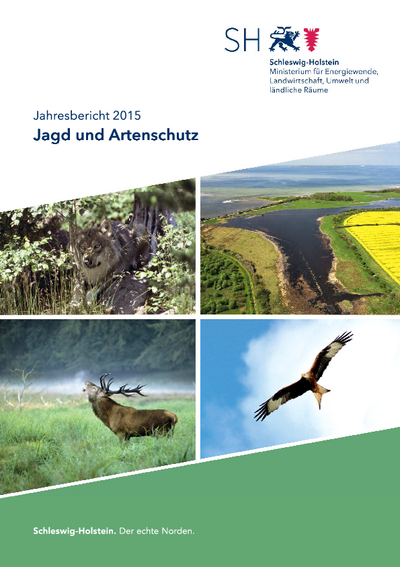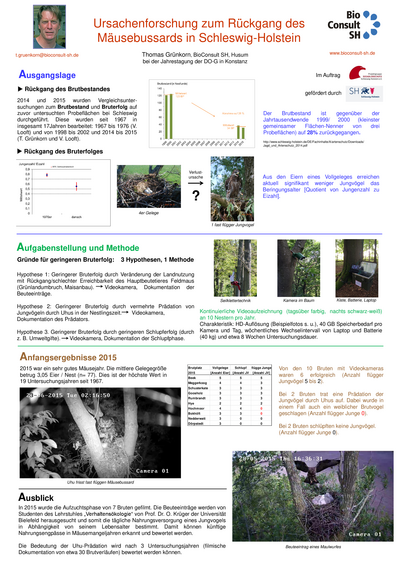Decline of the common buzzard
In a six-year study, BioConsult SH investigated possible causes for the declining breeding success of the common buzzard in Southern Schleswig.
Why is the common buzzard population in decline?
In 2014 and 2015, breeding population and breeding success of the common buzzard were studied in two larger sample areas in Southern Schleswig, for which comparative data from previous decades are available. It was found that the current population level of the common buzzard has declined to one third of the population at the turn of the millennium. In addition to grassland conversion (maize cultivation for biogas plants) and mortality caused by wind turbines, one reason for this decline may be the observed low survival rate of the nestlings.
Project objectives and methods
In a six-year study between April 2015 and 2020, BioConsult SH investigated possible causes for the declining breeding success of the common buzzard. In addition to continuous breeding population surveys and determination of breeding success and clutch size, 10 video cameras per breeding season were installed at common buzzard nests to test the following six hypotheses explaining reduced breeding success:
- Lower breeding success due to low food availability. The change in land use leads to a decline in/poorer accessibility of the main prey species, the common vole (Microtus arvalis). The intensification of agriculture is particularly evident in grassland conversion, increased maize and arable grass cultivation, stabling of dairy cows and thus loss of pastureland, high fertiliser applications and the use of heavy machinery. The video cameras were used to document prey arrivals and to quantify food supply.
- Reduced breeding success due to increased predation of young birds. Eagle owls (Bubo bubo) have become native again in Schleswig-Holstein thanks to a reintroduction programme of the State Association for Owl Protection (Landesverband Eulenschutz) and have spread extensively over the last decades. Other predators (e.g. goshawk or mammals) also occur in the study area. With the video cameras, predation events could be recorded and assigned to individual predators.
- Lower breeding success due to lower hatching success (due to e.g. environmental toxins). The video cameras documented the hatching phase and provided information on how many eggs did not produce hatchlings.
- Lower breeding success due to increased mortality of old birds (e.g. due to collisions with wind turbines or overhead power lines). The development of wind energy and the therefore increasing number of wind turbines coincides with the decline of the common buzzard population. Broods that are only cared for by one adult bird have a low probability of survival. The continuous video recordings helped to document the presence or disappearance of adult birds during the phase of rearing young.
- Reduced breeding success due to increased use of poisons in agriculture (secondary poisoning by e.g. rodenticides). The video recordings usually allow determining the cause of death and can, for example, provide indications of poisoning in the case of the sudden death of young birds.
- Reduced breeding success due to climate change (e.g. increasing extreme weather events such as heat or heavy rain with cold). The video footage records weather events and their effects on the young birds.
The images are transmitted from the camera in the tree canopy to a box on the ground using a cable attached to the tree trunk, which houses the power supply and the recording unit.
Results
Breeding success and reasons for young bird losses of common buzzards in Schleswig-Holstein – a detective story with the help of video cameras
Since the turn of the millennium, the population of the common buzzard has declined by about 75 % in several sample areas in Southern Schleswig.
Breeding success – measured as ratio of the number of young at the time of ringing and the number of eggs after climbing up to the nest twice – was lower in a more recent period than in a comparative study between 1967 and 1976 (57 % since 1998 as compared to 78 % in the 1970s).
We have monitored the nestling phase of overall 61 broods. From 177 eggs hatched 168 young birds, of which 117 fledged and 51 died beforehand for various reasons. The three most common reasons for young bird losses were 1. malnutrition due to low common vole numbers or availability due to intensification of agriculture (including maize cultivation for biogas plants), 2. predation by eagle owls and 3. extreme weather events.
Whether the in comparison to the reference period lower breeding success is the actual reason for the population decline needs to be discussed further. Other factors (in particular the survival probability of the adult birds, also with regard to a further development of wind energy use) are not known and will be important parameters in population models.
Videos 2017 (third year of the study)
The following three observations from the rearing phase of the young birds at Bünge/Dörpstedt are characteristic for the year 2017.
Not enough for three
This video shows an example for the insufficient food supply of the three young birds in spring 2017. On 6 June at 21:29, the female comes to the nest without prey for the fifth time in nine hours. On that day, a young bird received only 40 g instead of the required about 150 g. This means that the reserves for the following day with continuous rain and cold are low.
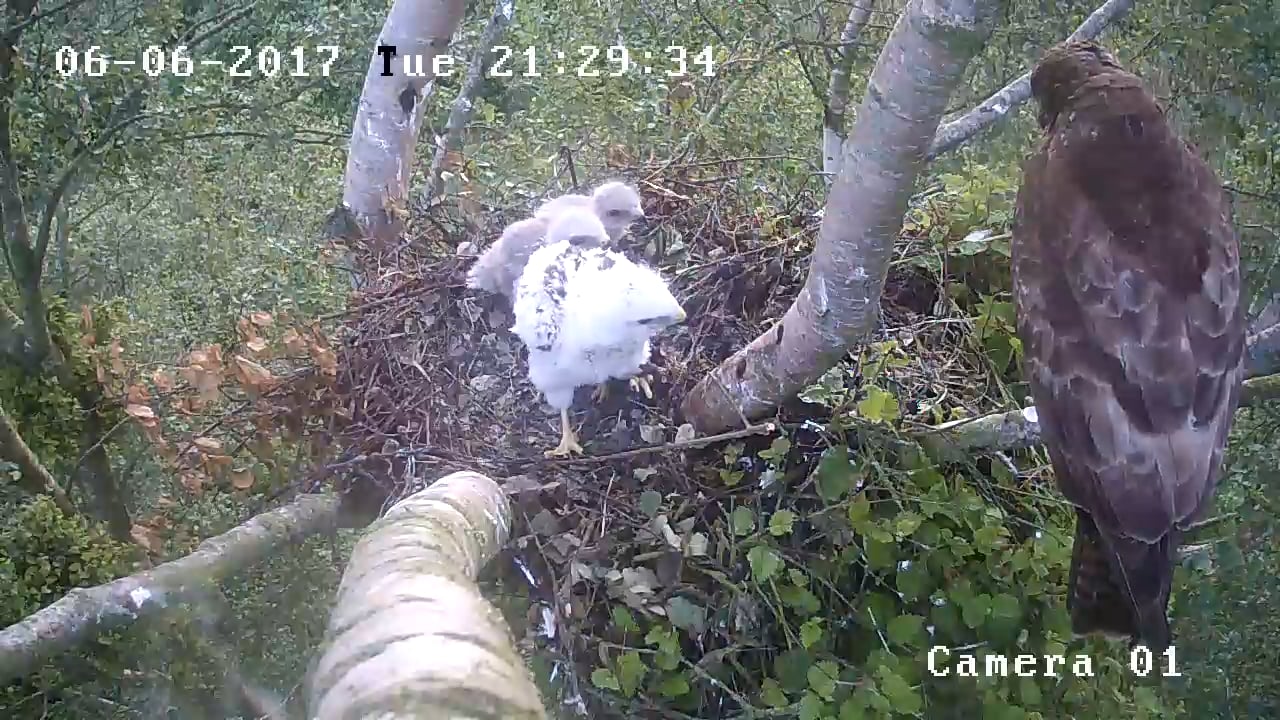
Please note: This embedded video is provided by Vimeo, Inc., 555 West 18th Street, New York, New York 10011, USA. A connection to the Vimeo servers is established as soon as you play back the video and Vimeo is informed which pages you access. As soon as a Vimeo video starts to play, the provider uses cookies to collect information on user behaviour. Please refer to https://vimeo.com/privacy for further information on the privacy policy at Vimeo.
© BioConsult SH
Extremely low temperatures in June
One day later, on 7 June, the smallest young bird has starved to death and is fed to its siblings. Another chick will not survive either. The reason is a bad weather event with a maximum of 13 degrees, gale force winds and continuous rain from 10:00 am for 20 hours. On this day alone, a total of 8 out of 26 chicks died in all nests observed with video cameras.
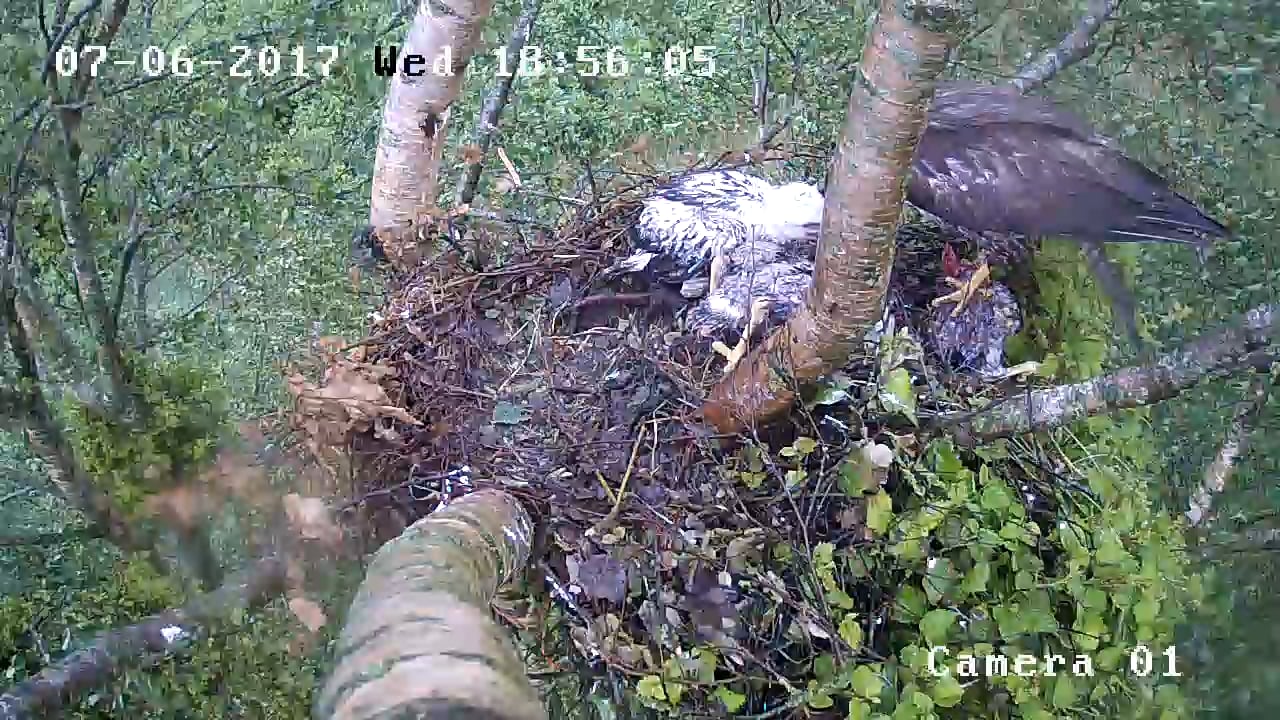
Please note: This embedded video is provided by Vimeo, Inc., 555 West 18th Street, New York, New York 10011, USA. A connection to the Vimeo servers is established as soon as you play back the video and Vimeo is informed which pages you access. As soon as a Vimeo video starts to play, the provider uses cookies to collect information on user behaviour. Please refer to https://vimeo.com/privacy for further information on the privacy policy at Vimeo.
© BioConsult SH
One survives
This video proves the good food supply of the surviving eldest – by now fledged – young bird, here feeding on a mole on 2 July.
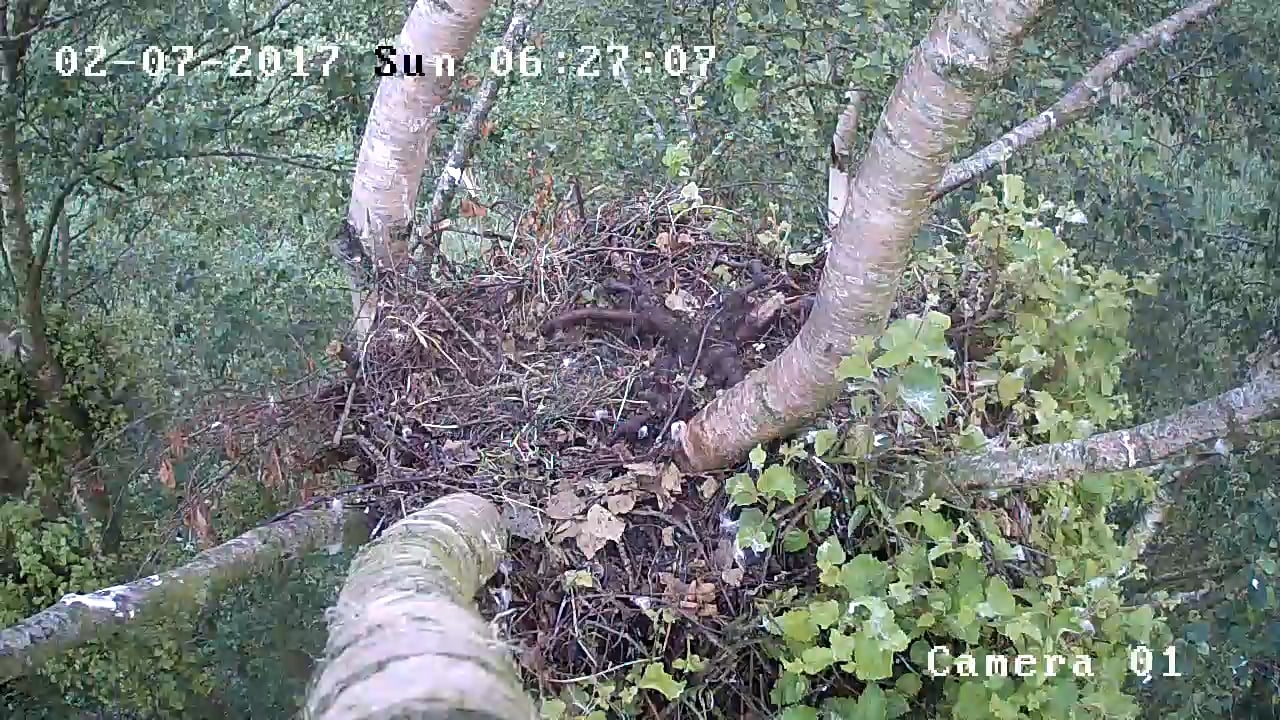
Please note: This embedded video is provided by Vimeo, Inc., 555 West 18th Street, New York, New York 10011, USA. A connection to the Vimeo servers is established as soon as you play back the video and Vimeo is informed which pages you access. As soon as a Vimeo video starts to play, the provider uses cookies to collect information on user behaviour. Please refer to https://vimeo.com/privacy for further information on the privacy policy at Vimeo.
© BioConsult SH
Videos 2016 (second year of the study)
The following video shows the only predation of 2016 by a goshawk. However, there was also a predation of a young bird by an eagle owl in this study year (not shown).
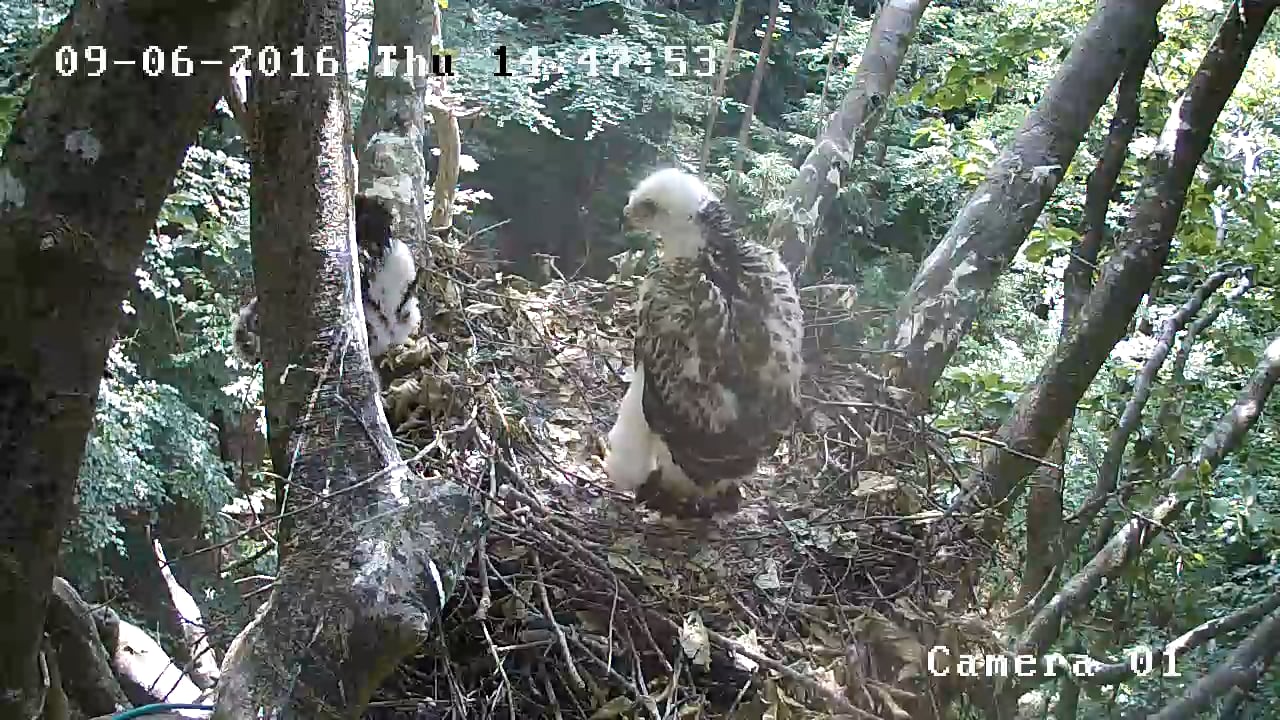
Please note: This embedded video is provided by Vimeo, Inc., 555 West 18th Street, New York, New York 10011, USA. A connection to the Vimeo servers is established as soon as you play back the video and Vimeo is informed which pages you access. As soon as a Vimeo video starts to play, the provider uses cookies to collect information on user behaviour. Please refer to https://vimeo.com/privacy for further information on the privacy policy at Vimeo.
© BioConsult SH
The food supply for the young birds is very poor in 2016 due to shortage of mice. The wet, freezing young birds fight over a common vole. Only one young bird stands up to its siblings and eats the vole alone.
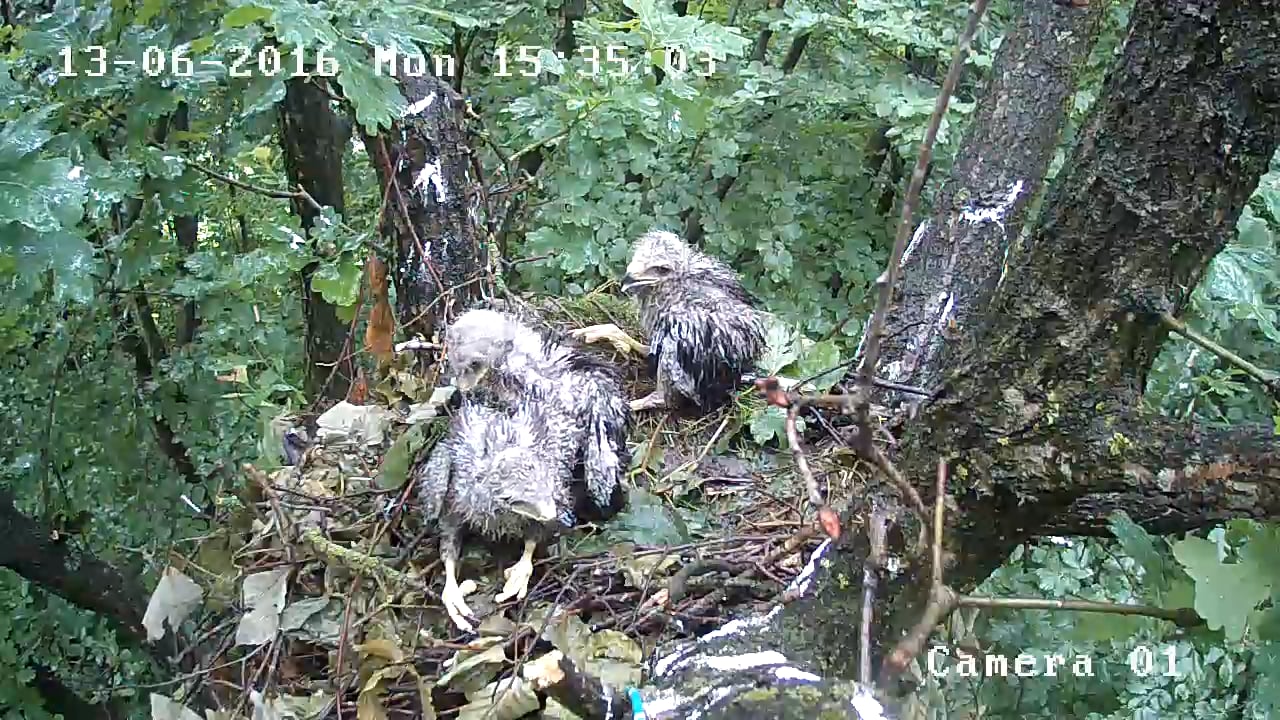
Please note: This embedded video is provided by Vimeo, Inc., 555 West 18th Street, New York, New York 10011, USA. A connection to the Vimeo servers is established as soon as you play back the video and Vimeo is informed which pages you access. As soon as a Vimeo video starts to play, the provider uses cookies to collect information on user behaviour. Please refer to https://vimeo.com/privacy for further information on the privacy policy at Vimeo.
© BioConsult SH
The weakest young bird starved to death just two hours later and fell out of the nest. Eight young birds starved to death in 2016 in the nests monitored by cameras. No young bird starved to death in 2015.
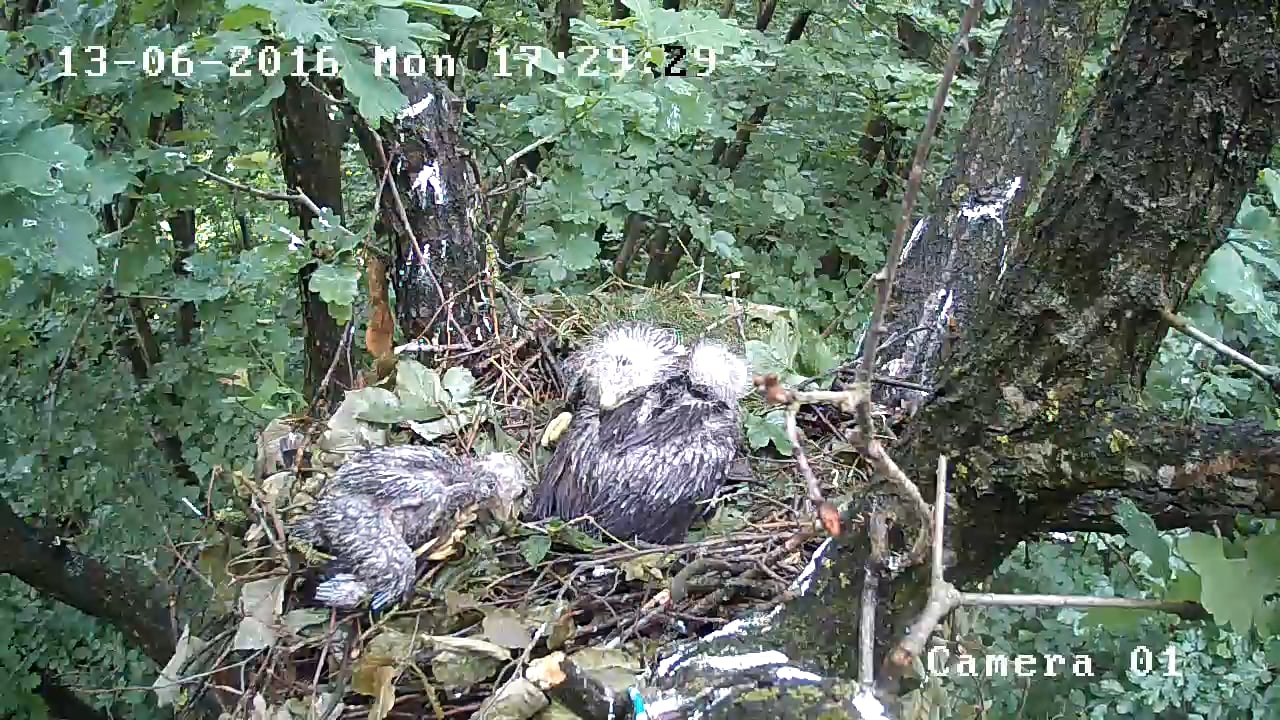
Please note: This embedded video is provided by Vimeo, Inc., 555 West 18th Street, New York, New York 10011, USA. A connection to the Vimeo servers is established as soon as you play back the video and Vimeo is informed which pages you access. As soon as a Vimeo video starts to play, the provider uses cookies to collect information on user behaviour. Please refer to https://vimeo.com/privacy for further information on the privacy policy at Vimeo.
© BioConsult SH
Videos 2015 (first year of the study)
In this video, you can see a young buzzard being killed in the nest by an eagle owl. The adult bird behaves very passively and does not try to scare the eagle owl away. The eagle owl appears at 0:18. Later, the adult bird is chased out of the nest (at 1:45). The second young bird was later taken from the nest by the eagle owl.
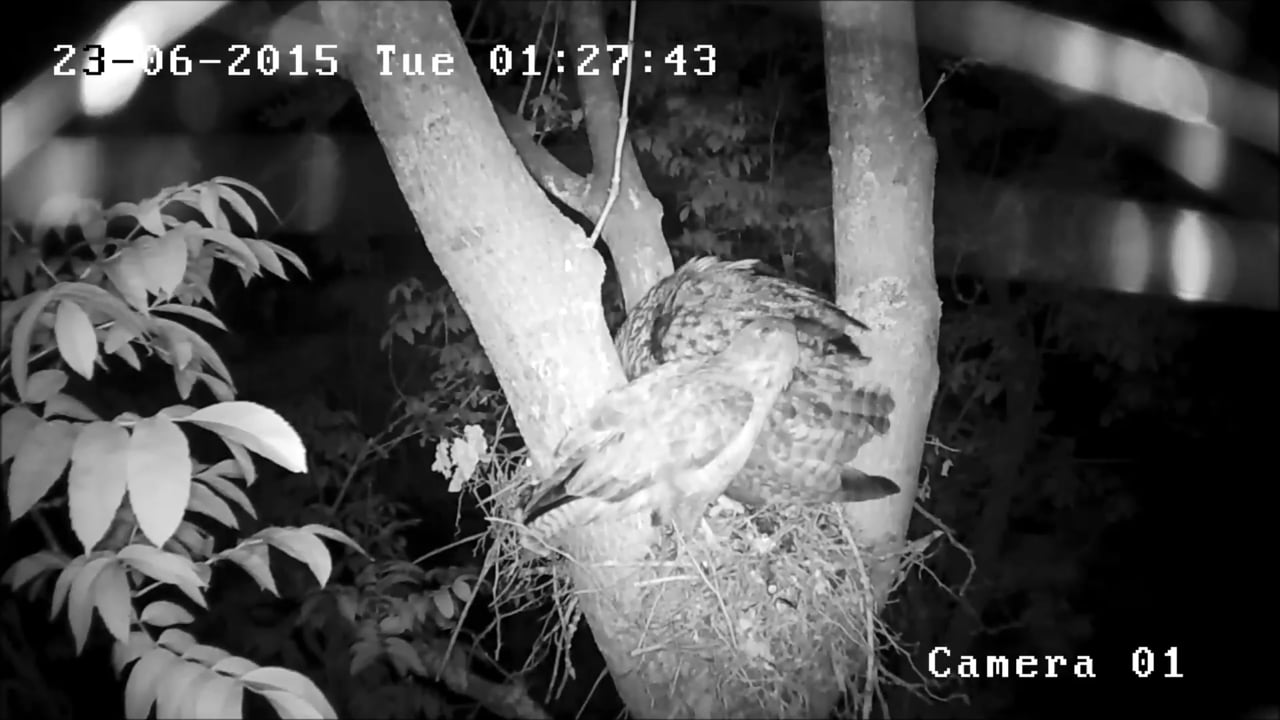
Please note: This embedded video is provided by Vimeo, Inc., 555 West 18th Street, New York, New York 10011, USA. A connection to the Vimeo servers is established as soon as you play back the video and Vimeo is informed which pages you access. As soon as a Vimeo video starts to play, the provider uses cookies to collect information on user behaviour. Please refer to https://vimeo.com/privacy for further information on the privacy policy at Vimeo.
© BioConsult SH
In this video, you can see how a young buzzard is taken from its nest by an eagle owl (at 0:33).
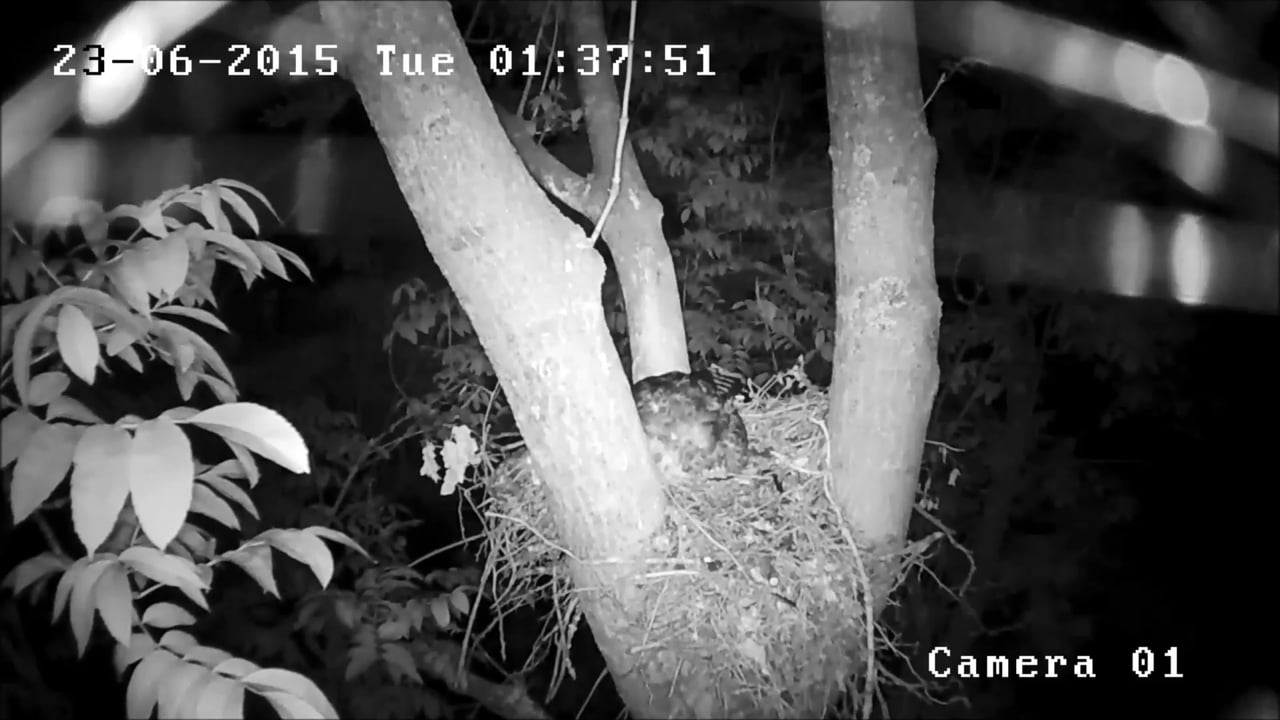
Please note: This embedded video is provided by Vimeo, Inc., 555 West 18th Street, New York, New York 10011, USA. A connection to the Vimeo servers is established as soon as you play back the video and Vimeo is informed which pages you access. As soon as a Vimeo video starts to play, the provider uses cookies to collect information on user behaviour. Please refer to https://vimeo.com/privacy for further information on the privacy policy at Vimeo.
© BioConsult SH
Publications
Projekt Ursachenforschung zum Rückgang des Mäusebussards im Landesteil Schleswig
Jagd und Artenschutz 2016 p. 91-94
Further information
On behalf of
Funded by


